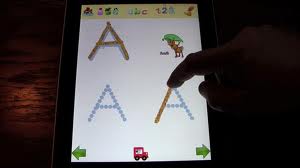Blog #157~Making Inclusion Work
Is inclusion right for your child? That was the question I addressed in last week’s post. Inclusion simply stated, means that a student is supported in the general education classroom setting with given supports outlined in the IEP. The IEP is an Individualized Education Plan, is a document for special education students. This document identifies how the student will learn, what services the school will provide, and how their progress is measured. My son Nick, was in an inclusion classroom during his elementary school years. He has Down syndrome and autism, and benefited greatly from the experience. How do you make the inclusion setting work for your child with special needs?
The Individuals With Disabilities Education Act (IDEA), amended version 2004, does not actually list the word inclusion. The law actually requires that children with disabilities be educated in the “least restrictive environment appropriate” to meet their “unique needs.” The “least restrictive environment” typically means placement in the regular education classroom which typically means ‘Inclusion’ when ever possible. (Source taken from about.com)
The IEP team works with the parents to determine the least restrictive environment and builds the placement around this concept. What will the child need to be successful in a regular education classroom? The IEP team and parents should collaborate to identify supports needed.
Classroom Supports:
*Modified Curriculum: (Regular education teacher and support/case manager) work together to adapt the current assignments for the child. Make a plan to address what will be learned in the regular classroom, and how will the student will learn that similar information?

*Staffing: Does the child need a paraprofessional (classroom aide)? What is the ratio? What additional training will be needed?
*Equipment: Physical environment (modified desk, chair, adaptive equipment/school supplies, sensory supports)
*Assistive Technology: Communication (Alternative Augmentative Communication “AAC” device, Picture Exchange Communication System “PECS”, Sign Language/Interpreter), or other devices using apps for to navigate schedules and assignments.


*Sensory Breaks: What space will be provided, is there a sensory area in the school? How will the student request a break (need a break icon, button on AAC device)? What equipment is needed, (noise cancelling head phones, figit toys, nubby cushion, music, weighted vest or blanket, bean bag chair, swing, trampoline)?


In addition to identifying classroom supports, the team should address these questions at the IEP Meeting:
* What are the student’s strengths, and how do we build a plan around them?
*How does the student learn best?
*What behavior support is needed to help the student learn the best, and operate comfortably in the general education classroom?
Identifying supports needed and how to best accommodate the student will set a good foundation to success in the inclusion classroom setting. The student will benefit by having access to the general curriculum and build social relationships in this community in the least restrictive, inclusion environment. That’s what is in my noggin this week.
~Teresa
Follow Nick:

Facebook and Pinterest @Down Syndrome With A Slice Of Autism
Instagram: #nickdsautism
Twitter: @tjunnerstall








